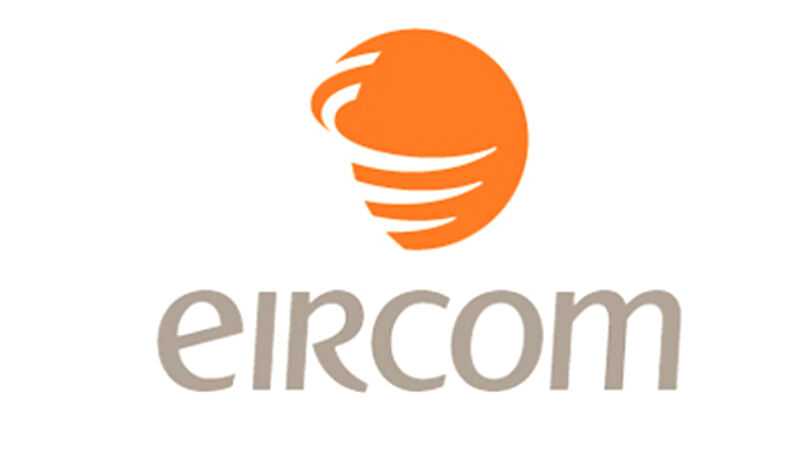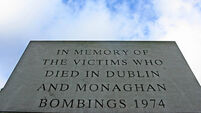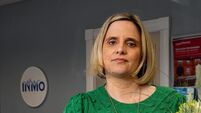End of the line for Eircom dream

It’s only 13 years since the Eircom privatisation, but it feels like it was a generation ago.
Following intense hype, half a million of us bought into Mary O’Rourke’s vision of a share-owning society and paid €3.90 a share when the company went public in July 1999. The government cleared €6bn overnight.
For a little while, everything went to plan. Shortly after the floatation, the share price hit a high of €4.77. We all basked in the glow.
But it didn’t last. When the share value slid below the floatation price in Sept of 1999, media analysts comforted us, telling us to hang in there, that the stock was undervalued, that things would come right.
Some analysts even advised investors to double their stake ahead of gains at some indeterminate point in the future. But within a year of the floatation, the price was down 27% and a year after that, the company was at the centre of a takeover battle between Denis O’Brien and Tony O’Reilly.
When O’Reilly’s Valentia consortium carried off its prize and de-listed from the stock market — a possibility that had never been discussed prior to floatation — the majority of shareholders who took the advice and hung on were left 30% out of pocket. Analysts now rounded on that €3.90 floatation price. We were told that it was wildly overvalued. We were told that shares can fall as well as rise.
The whole experience offers a microcosm of the Celtic Tiger years. Hype and hubris, disbelief that things could be so good, followed swiftly by disbelief that things could get so bad, and a hangover that lasts many times longer than the original party.
Given the deep cynicism that the intervening years have brought, it’s hard to conceive of how completely we bought into the idea of Eircom being a sure thing.
Back in 1999, the company had debts of €540m and assets of €1.35bn. When its share price hit that €4.77 high, Eircom’s market capitalisation stood at €10.25bn.
Thirteen years and five owners later, the company struggles beneath debts of €3.8bn. When its most recent owner, STT bought the company in Jan 2010, it only had to come up with €39m.
On Thursday, with the company’s creditors poised to take control of the telecoms giant, the death of a thousand cuts was nearly complete. The biggest examinership in Irish corporate history is under way.
Where did it all go wrong? While telecoms around the world are struggling to compete in the current environment, Eircom’s difficulties go far beyond the recession. The company has been hollowed out by a series of short-termist owners with zero interest in developing the company and less still in providing the country with a modern telecommunications infrastructure.
The writing was on the wall 11 years ago when Tony O’Reilly took the company private. His consortium funded the €3.2bn purchase with €2.7bn of debt, all of which ended up on Eircom’s balance sheet, thereby killing off any possibility the company might have of raising debt to fund investment.
When the Valentia consortium refloated the company in 2004, it’s estimated that they had made almost €1bn from their three-year involvement.
In 2006, it was acquired by Australian bank Babcock & Brown, again through a leveraged buyout. This is a remarkable construct, which allows those who wish to acquire a company to borrow in its name.
It’s also worth noting that it wasn’t just these acquisition structures which disincentivised the development of the company or the network. Each time Eircom changed hands, senior management benefited hugely.
During the Valentia ownership, the company’s top four managers were paid €29m.
Nor should anyone underestimate the role of the workers themselves in contributing to the slow collapse of the organisation. Back in 1998, the government set up an employee share ownership trust (ESOT), which was designed to protect the interests of Eircom workers as privatisation approached.
It was highly effective in this regard, but it also had the bizarre consequence of transforming a small group of public sector employees into financial buccaneers, who have profited hugely from the destruction of their company.
When Eircom floated, workers got a 14.9% stake for an average price of €1.70 per share — a fraction of the €3.90 that the public paid. Not content with making this killing, Valentia sweet-talked the ESOT into accepting its calamitous 2001 bid, which saw the employees take control of 29.9% of the company.
The 12,500 members of the ESOT — most of whom no longer work for the company — have received more than €770m since Eircom’s privatisation in 1999.
On average, that’s over €60,000 a head, while further horse-trading in the subsequent buy-outs has brought the ESOT’s percentage ownership up to 35%. Even more bizarrely, though this succession of leveraged deals has materially damaged the country’s competitiveness, the Revenue Commissioners continue to grant tax-free status to each windfall.
Babcock & Brown passed the parcel in Jan 2010, this time to Singapore-based STT for just under €40m. In the year to June of 2009, Eircom reported an operating loss of €486m, revenue dropped 3%, while 67,000 fixed line contracts were lost to competitors. Though the company was now more than a decade out of public ownership, it still bore costly legacy issues, with 80% of employees on civil service contracts, the average age of the workforce 51 and only 6% of staff aged under 40.
As the recession deepened, chief executive Paul Donovan, recently arrived from Vodafone, sat down with unions and set about trying to drag work practices into the 21st century.
By this time last year, management and unions had agreed to a “recovery package” that included labour savings of €92m. The package featured an 18-month pay freeze as well as 1,000 voluntary redundancies over a three -year period.
Meanwhile Meteor, hitherto the jewel in Eircom’s otherwise shabby crown, was starting to feel the impact of recession. The mobile subsidiary reported last April that earnings were down 19% to €102m.
Eircom acquired Meteor for €420m in 2005 in order to re-enter the mobile market which it had exited shortly before the Valentia acquisition in 2001.
The sale of Eircell, then the largest network on the market, to Vodafone, was widely regarded as a poor strategic move. Mobile phone penetration was still relatively low in Ireland, and as mobile ownership figures racked up through the last decade, Eircom was left standing at the bus stop wondering why it had got off so early.
Moreover, as part of its deal with Vodafone, Eircom agreed to stay out of the mobile market for three years.
In a press interview last year, Mr Donovan said the company would have been much stronger with a fully -fledged mobile operator over the previous 10 years.
By the middle of last year, it was clear that something radical needed to be done about the company’s debt burden. In June, Eircom confirmed it had breached the covenants on its debts, and in September it was granted a three-month waiver from its lenders to allow it to arrive at a rescheduling solution.
The months of negotiation which followed this process have been as complex as they have been torturous, involving workers, management, lenders and shareholders in a poker game which cannot but end badly for everyone. STT owns 65% of the company, the ESOT has the other 35%. They faced a co-ordinating committee of 200 ‘first lien’ lenders who are owed collectively €2.6bn.
As the wrangling wore on, Ireland continued to languish at the bottom of European broadband tables.
Ireland Offline, the pressure group which campaigns for universal high-speed broadband access, released its quarterly report earlier this month. It says that we in Ireland pay the second-highest cost per megabit of data in the EU.
This from the report: “We are stagnant in terms of upload and download speeds, however the likes of Bulgaria, Moldova, Belarus, Romania, Zimbabwe and Nigeria are still ahead of us for download speeds and we are battling to stay ahead of Laos in terms of upload speeds. We are 74th in the world for upload speeds, with Libya, a country with no government, catching us up fast.”
The organisation points out that Eircom never completed the DSL rollout programme begun five years ago, and says that there are up to 250 exchanges still not enabled for basic DSL.
In July, the company announced that it would invest more than €100m in its broadband network, and that it planned to offer TV services from 2013. It said it targeted 100,000 premises in the first phase of the upgrade, which is to take place this summer.
The company also says it plans to bring fibre-based services to 1m homes and businesses, though it does not say when this target will be met.
Meanwhile, the company has been haemorrhaging market share. Earnings continued to fall in the second half of 2011, while cable TV and broadband company UPC reported revenue growth of 11%. More particularly, UPC said its broadband subscriber base rose by 28% last year to more than 255,000, while its number of telephone subscribers rose by 68% to more than 162,000.
With UPC snapping at its heels, Eircom needs the kind of investment mooted last July.
But last month, to no one’s surprise, the company finally went into default. And late last Wednesday, the majority of the company’s lenders voted to file for examinership, a move which was also backed at a meeting of the Eircom board. The following day, Thursday, a company representative went to the High Court to formally seek protection from the company’s creditors to allow it to restructure the €3.8bn debt.
Control of the company will now pass out of the hands of STT and the ESOT and into those of the lenders.
The deal is expected to cut the company’s debt by 40%, bringing it that bit closer to the €2bn which has been suggested as ‘sustainable’ for a company of its size.
The court was told that 1,000 job losses will be required over the next five years in order to make the company viable.
As Eircom changes hands for the sixth time in 13 years, this deal is notable for actually removing debt from the balance sheet instead of loading it with more. At the time of writing it’s not clear whether or not the lower- tier bondholders, many of whom will lose substantially under the deal, will challenge it in court. Trade creditors are safe and will not be liable for losses.
The biggest question now is what a diverse group of 200 creditors will do with Eircom.
The second big question relates to other privatisations that lie in store. The IMF is expecting €2bn to be raised through the sale of state assets. If Government learns anything from the Eircom debacle, it will not have been entirely in vain.
*1984: Bord Telecom Eireann formed under the Posts and Telecommunications Act 1983.
*1995: EU laws requiring the opening up of the Irish telecommunications market prompt the beginning of the privatisation process.
*1998: Name changed to Eircom. The name “Telecom Eireann” seen as “dated, flat and cold”.
*1999: Eircom floated on Irish, London and New York stock exchanges following a huge advertising campaign encouraging small investors to buy shares. 500,000 take up offer.
* 2000: Share price falls prompting widespread outrage.
* 2001: Eircom sells Eircell to Vodafone. Following a bidding war, the Valentia consortium takes over the company and it is delisted from stock exchanges.
* 2004: Company returns to the stock market and is floated at €1.55 a share.
* 2005: Eircom buys Meteor for €420 million. Attempted takeover of Eircom by Swisscom AG blocked by the Swiss government, which has a controlling interest.
* 2006: Eircom sold to Australian investment group Babcock & Brown. Company delisted from stock exchange a second time.
* 2008: Irish Recorded Music Association takes legal action against Eircom for allowing subscribers to access file-sharing sites.
* 2009: Eircom agrees out of court to instigate graduated response against file-shares, leading to the discontinuation of services for repeat offenders. Company earnings continue to fall.
* 2010: Eircom sold to Singapore based STT, launches eMobile. Losing 1,300 customers a week.
* 2011: Talks with creditors begin. Earnings continue to slump.
* 2012: Eircom defaults on debt, enters examinership.
















